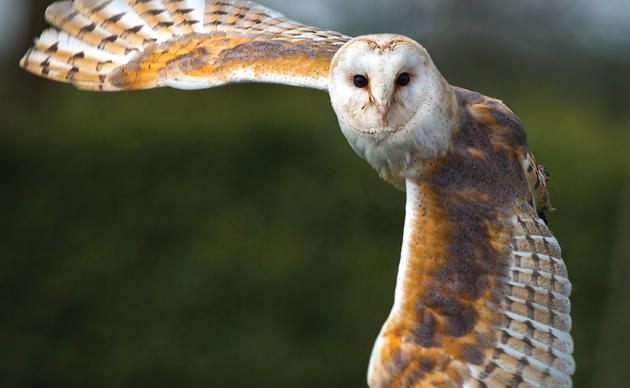One of the fastest growing counties in North Carolina has new bird-friendly development guidelines on the books, thanks to advocacy from a local Audubon chapter.
The policies passed as part of a larger update to Chatham County’s land-use rules, also known as the Uniform Development Ordinance (UDO), which now include stronger native plants and tree preservation rules.
“It’s extremely important to get bird-friendly language into UDOs because they will dictate how things are built for the next ten years or more,” New Hope Bird Alliance Conservation Chairperson Barbara Driscoll said.
Chatham County is far from alone. Across North Carolina, towns and cities are undergoing rapid growth. Often, this growth is accompanied by the loss of tree canopy and urban and suburban forests. The good news is that it doesn’t have to be this way. Communities can grow in ways that promote wildlife conservation and urban forestry, while also accommodating more people and industries.
Local governments are keeping pace with growth by updating their Unified Development Ordinances (UDO)—rules developers follow when planning and constructing new buildings. These update processes are excellent opportunities to advocate for bird-friendly development rules, Driscoll said.
Bird-friendly Changes
The final version of Chatham County’s UDO update includes strong native tree policies, including guidelines for “tree save areas” and a requirement that all new canopy trees be native species (in addition to a 75 percent requirement for all other plantings). Developers are also provided incentives for preserving large trees that meet certain criteria and are outside of required tree save areas. The final UDO incorporates greater species diversity requirements for new plantings as well.
Next up, New Hope Bird Alliance is working with the county’s appearance board to include the North Carolina Invasive Plant Council’s species list in the approved UDO so that developers and the county know what species are invasive to the area.
The sum of all these changes will be much more bird-friendly land-use rules that will help guide development for a generation.
“These represent big wins for birds and people,” Driscoll said. “They will allow us to make smarter decisions as we develop our cities and towns, while creating high-quality habitat for birds and other wildlife.”
The Importance of UDOs
Land-use rules are one of the most important avenues we have for ensuring that North Carolina’s communities grow in the right way, with wildlife and habitat protections in mind.
But the process for updating them can be long and confusing, as every municipality has their own Unified Development Ordinance and procedures for updating it. That’s why New Hope Bird Alliance organized early to look at the draft land-use rules and come up with a plan to submit comments to the county.
The goal for the chapter was to incorporate strong native plant, biodiversity, invasive species, and lighting recommendations throughout the UDO to ensure that conservation is prioritized throughout a project.
UDO Advocacy 101
The team from New Hope Bird Alliance included landscape architects and members of the chapter's conservation and bird friendly habitat committee. The first public review draft was released in April with public comment ending in May. So, the group quickly submitted their first round of comments in May—after speaking with a staff member from the Chatham County planning department and reaching out to local advocacy groups to coordinate messaging. They then had the opportunity to submit another round in October.
“A lot of my comments were to address the broader environmental impact of new construction projects to try to maximize possible benefits for birds,” landscape architect Preston Montague said. “It’s important to look at things like land clearing and tree preservation within UDOs because that can help maintain the overall health and biodiversity of an area throughout a project.”
Most of the comments they submitted in the first round were incorporated into the final draft by the commission. Driscoll says that’s partly due to submitting easily digestible comments right into the draft UDO, in addition to the planning and meeting that took place beforehand.
It's also important to be as specific as possible and utilize standards set by experts and even other municipalities. Throughout the draft, New Hope Bird Alliance references the updated Invasive Species List recently published by the North Carolina Invasive Plant Council as well as tree planting requirements from other cities’ UDOs. This created a standard by which they could make recommendations that have been tested elsewhere.
After going through this process and preparing for Durham’s upcoming UDO update, New Hope Bird Alliance identified lessons learned for other chapters and organizations interested in working with their local governments...
-
If appropriate and if the time frame allows, coordinate comments with other advocacy groups to maximize reach and resources. Also meet with planning department staff to get an idea of the timeline, talk through priorities, and get ideas for how best to use your time.
-
Understand who is approving the final UDO, whether that be the County Commission or Town Council, identify who within those bodies might be interested in bird-friendly policies and other conservation issues, and meet with them. Talk to them about your priorities and comments so they can ask questions and work through any potential issues.
-
Coordinate with Audubon North Carolina staff (hannah.pursley@audubon.org, ben.graham@audubon.org, and brittany.salmons@audubon.org), in case there are opportunities for action alerts and other coordinated advocacy. The more elected officials hear from constituents, the more likely they will be to support an issue.
Through our new Urban Forestry program, we want to help chapters be successful at their local governments by creating resources that will make it easier to send comments. If you’re interested in getting involved, join our monthly Urban Forestry network call here.






